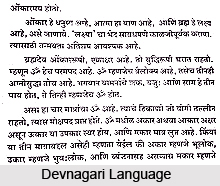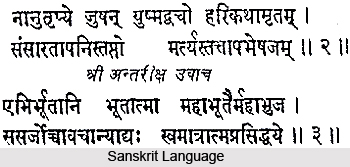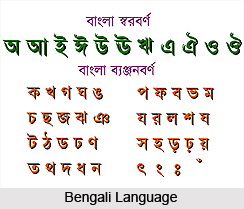 Aryan Languages consists of a number of languages that have added to the glitz and glory of Indian languages. Konkani is an exuberant language, belonging to Indo-Aryan language group, widely spoken on the western coast of India, namely Konkan. Various states of India namely northern and central coasts of Maharashtra, Goa, Dadra and Nagar Haveli, Canara (coastal Karnataka) and also some provinces of Kerala are integrated to this whole of Konkan area and speak Konkani.
Aryan Languages consists of a number of languages that have added to the glitz and glory of Indian languages. Konkani is an exuberant language, belonging to Indo-Aryan language group, widely spoken on the western coast of India, namely Konkan. Various states of India namely northern and central coasts of Maharashtra, Goa, Dadra and Nagar Haveli, Canara (coastal Karnataka) and also some provinces of Kerala are integrated to this whole of Konkan area and speak Konkani.
Thus quite a large number of people speak this beautiful language of Konkani. A report was brought out by `The Census Department of India` in the year 1991, which records that the number of Konkani speakers in India is 1,760,607. This population comprises of 0.21% of the total number of people residing in Indian subcontinent. It secures the position of being fifteenth in the comprehensive list of `Scheduled Languages`. It was recorded as per the total `strength` of people. Very recently, the ethnological record gave an estimation of 7.6 million speakers in the whole of the world. The evolution of Konkani is quite significant. In the initial years of its inception, Konkani has developed as a popular language in Goa province. Although Brahmi script was used in the initial days, soon it paved the way for Devangiri script rampantly used for writing. It was used widely for spiritual purposes and also for maintenance of accounts, trading ledgers and other daily chores.

The next era of the development of Konkani is largely embellished with the contributions of various communities. Various Konkani communities moulded the Konkani language suiting their own viability. Muslim communities of the Konkan region of Ratnagiri and Bhatkal shaped the Konkani languages. Factors like inter caste marriages with Arab populace, changeovers of Hindus to Muslims etc have brought about these changes in the language. Some of them who have settled down in nearby territories also implanted several modifications in their language and practices also. Thus in this way, during the last five hundred years, the Konkani language spread to various state provinces like Canara, Kokanpatta and Kerala etc.
Amongst the languages of India that are held in high esteem by the people of India, Kannada Language has a special significance. It has brought about fame and prestige for the whole panorama of Indian language. It has got the ranking of being the twenty seventh most spoken languages in the whole world. Kannada is also one of those that have received the status of being the official language of Indian states. It is also a proud member of the highly acclaimed Dravidian language family, spoken widely in the southern region of Karnataka. Apart from being official language of Karnataka, Kannada is also used here for the administrative purposes.

Kannada language has been evolved in its present form, undergoing several twins and turns. In fact, the Indian linguists have demarcated the whole of this evolutionary process in to four broad phases. Various social and religious influences have shaped this evolution. Malayalam is classified as a South Dravidian language. Malayalam is concentrated in the state of Kerala and adjoining areas. As "Malai" (Chera) denotes "mountain", the word "Malai alam" obviously refers to either people or the language of the hilly region. About a thousand years ago Tamil was the spoken language of present-day Kerala state with a number of local variations. It is said that Malayalam as a spoken language. This was not referred to in Tamil literature before the fifteenth century.
Marathi is an Indo Aryan language spoken by the Marathi people of western India (Maharshtrians). It serves as the official language of the state of Maharashtra, with roughly ninety million fluent speakers worldwide. The Marathi language ranks 4th in the whole of India as and when balanced with the number of populace who claim it as their primary language. Along with Bengali, Marathi is the oldest of the regional literatures in Indo-Aryan languages, dating from about 1000 AD. Marathi is at least fifteen hundred years old, and derives its grammar and syntax from Pali and Prakrit. The Marathi language was earlier known as Maharashtri, Maharathi, Malhatee or Marthi in ancient times. Some of the peculiar features of Marathi linguistic culture include Marathi drama, with its unique style of `Sangeet Natak`, scholarly discourses called `Vasant Vyakhyanmala`, Marathi folk dance called `Lavani`, and special editions of magazines for Diwali called `Diwali anka.`



















